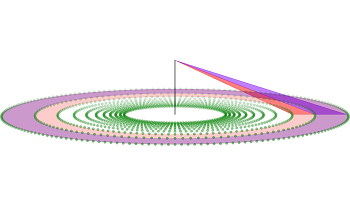References
1AdamsW. J.ElderJ. H.GrafE. W.LeylandJ.LugtigheidA. J.MuryyA.2016The Southampton-York Natural Scenes (SYNS) dataset: Statistics of surface attitudeSci. Rep.63580510.1038/srep35805
2BianZ.BraunsteinM. L.AndersenG. J.2005The ground dominance effect in the perception of 3-d layoutPerception & Psychophysics67802815802–1510.3758/BF03193534
3BianZ.AndersenG. J.2008Aging and the perceptual organization of 3-d scenesPsychol. Aging2334210.1037/0882-7974.23.2.342
4BianZ.AndersenG. J.2010The advantage of a ground surface in the representation of visual scenesJ. Vis.10161616–10.1167/10.8.16
5BurgeJ.FowlkesC. C.BanksM. S.2010Natural-scene statistics predict how the figure–ground cue of convexity affects human depth perceptionJ. Neurosci.30726972807269–8010.1523/JNEUROSCI.5551-09.2010
6ChampionR. A.WarrenP. A.2010Ground-plane influences on size estimation in early visual processingVis. Res.50151015181510–810.1016/j.visres.2010.05.001
7
8DurginF. H.LiZ.2011Perceptual scale expansion: An efficient angular coding strategy for locomotor spaceAttention, Perception, & Psychophysics73185618701856–7010.3758/s13414-011-0143-5
9EpsteinW.1966Perceived depth as a function of relative height under three background conditionsJ. Experimental Psychology72335338335–810.1037/h0023630
10FeldmanJ.2013Tuning your priors to the worldTopics in Cognitive Science5133413–3410.1111/tops.12003
11FeriaC. S.BraunsteinM. L.AndersenG. J.2003Judging distance across texture discontinuitiesPerception32142314401423–4010.1068/p5019
12GeislerW. S.2008Visual perception and the statistical properties of natural scenesAnnu. Rev. Psychol.59167192167–9210.1146/annurev.psych.58.110405.085632
13GibsonJ. J.The Perception of the Visual World1950Houghton MifflinBoston, MA
14GibaldiA.CanessaA.SabatiniS. P.2017The active side of stereopsis: Fixation strategy and adaptation to natural environmentsScientific Reports71181–1810.1038/srep44800
15GibaldiA.BanksM. S.2019Binocular eye movements are adapted to the natural environmentJ. Neurosci.39287728882877–8810.1523/JNEUROSCI.2591-18.2018
16GogelW. C.1969The sensing of retinal sizeVision Res.9107910941079–9410.1016/0042-6989(69)90049-2
17GogelW. C.TietzJ. D.1973Absolute motion parallax and the specific distance tendencyPerception & Psychophysics13284292284–9210.3758/BF03214141
18GillamB.Chapter 2 – The perception of spatial layout from static optical informationPerception of Space and MotionHandbook of Perception and Cognition1995Academic PressSan Diego236723–6710.1016/B978-012240530-3/50004-3
19HackelT.SavinovN.LadickyL.WegnerJ. D.SchindlerK.PollefeysM.Semantic3D.net: A new large-scale point cloud classification benchmarkISPRS Annals of Photogrammetry, Remote Sensing and Spatial Information Sciences2017Vol. IV-1/W1919891–810.5194/isprs-annals-IV-1-W1-91-2017
20HarrisC. R.MillmanK. J.van der WaltS. J.GommersR.VirtanenP.CournapeauD.WieserE.TaylorJ.BergS.SmithN. J.KernR.PicusM.HoyerS.van KerkwijkM. H.BrettM.HaldaneA.del RíoJ. F.WiebeM.PetersonP.Gérard-MarchantP.SheppardK.ReddyT.WeckesserW.AbbasiH.GohlkeC.OliphantT. E.2020Array programming with NumPyNature585357362357–6210.1038/s41586-020-2649-2
21HeZ. J.WuB.OoiT. L.YarbroughG.WuJ.2004Judging egocentric distance on the ground: Occlusion and surface integrationPerception33789806789–80610.1068/p5256a
22HibbardP. B.BouzitS.2005Stereoscopic correspondence for ambiguous targets is affected by elevation and fixation distanceSpatial Vis.18399411399–41110.1163/1568568054389589
23HuangJ.LeeA. B.MumfordD.Statistics of range imagesProc. IEEE Conf. on Computer Vision and Pattern Recognition. CVPR2000Vol. 1IEEEPiscataway, NJ324331324–31
24HunterJ. D.2007Matplotlib: A 2d graphics environmentComputing in Science & Engineering9909590–510.1109/MCSE.2007.55
25KavšekM.GranrudC. E.2013The ground is dominant in infants’ perception of relative distanceAttention, Perception, & Psychophysics75341348341–810.3758/s13414-012-0394-9
26LangerM. S.MannanF.2012Visibility in three-dimensional cluttered scenesJ. Opt. Soc. Am. A29179418071794–80710.1364/JOSAA.29.001794
27LiuY.BovikA. C.CormackL. K.2008Disparity statistics in natural scenesJ. Vis.8191919–10.1167/8.11.19
28McCarleyJ. S.HeZ. J.2000Asymmetry in 3-d perceptual organization: Ground-like surface superior to ceiling-like surfacePerception & Psychophysics62540549540–910.3758/BF03212105
29McKinneyW.van der WaltS.MillmanJ.Data structures for statistical computing in pythonProc. 9th Python in Science Conf.2010566156–6110.25080/Majora-92bf1922-00a
30MengJ. C.SedgwickH.2001Distance perception mediated through nested contact relations among surfacesPerception & Psychophysics631151–1510.3758/BF03200497
31Morin DuchesneX.
32Morin-DuchesneX.LangerM. S.
33OoiT. L.WuB.HeZ. J.2001Distance determined by the angular declination below the horizonNature414197200197–20010.1038/35102562
34OoiT. L.WuB.HeZ. J.2006Perceptual space in the dark affected by the intrinsic bias of the visual systemPerception35605624605–2410.1068/p5492
35OoiT. L.HeZ. J.2007A distance judgment function based on space perception mechanisms: revisiting gilinsky’s (1951) equationPsychological Review11444110.1037/0033-295X.114.2.441
36PotetzB.LeeT. S.2003Statistical correlations between two-dimensional images and three-dimensional structures in natural scenesJ. Opt. Soc. Am. A20129213031292–30310.1364/JOSAA.20.001292
37ProffittD. R.BhallaM.GossweilerR.MidgettJ.1995Perceiving geographical slantPsychonomic Bulletin and Review2409428409–2810.3758/BF03210980
38ReichelF. D.ToddJ. T.1990Perceived depth inversion of smoothly curved surfaces due to image orientationJ. Experimental Psychology: Human Perception and Performance16653664653–6410.1037/0096-1523.16.3.653
39RudermanD. L.1997Origins of scaling in natural imagesVis. Res.37338533983385–9810.1016/S0042-6989(97)00008-4
40SedgwickH. A.The Visible Horizon: A Potential Source of Visual Information for the Perception of Size and Distance1973Cornell UniversityIthaca, NY
41SinaiM. J.OoiT. L.HeZ. J.1998Terrain influences the accurate judgement of distanceNature395497500497–50010.1038/26747
42SimoncelliE. P.OlshausenB. A.2001Natural image statistics and neural representationAnn. Rev. Neurosci.24119312161193–21610.1146/annurev.neuro.24.1.1193
43SpragueW. W.CooperE. A.TošićI.BanksM. S.2015Stereopsis is adaptive for the natural environmentSci. Adv.1e140025410.1126/sciadv.1400254
44StefanucciJ. K.ProffittD. R.CloreG. L.ParekhN.2008Skating down a steeper slope: Fear influences the perception of geographical slantPerception37321323321–310.1068/p5796
45SuC.-C.CormackL. K.BovikA. C.2017Bayesian depth estimation from monocular natural imagesJ. Vis.17222222–10.1167/17.5.22
46ThompsonW. B.DildaV.Creem-RegehrS. H.2007Absolute distance perception to locations off the ground planePerception36155915711559–7110.1068/p5667
47Van RossumG.DrakeF. L.Python 3 Reference Manual2009CreateSpaceScotts Valley, CA
48Warren JrW. H.WhangS.1987Visual guidance of walking through apertures: body-scaled information for affordancesJ. Experimental Psychology: Human Perception and Performance1337110.1037/0096-1523.13.3.371
49WragaM.1999The role of eye height in perceiving affordances and object dimensionsPerception & Psychophysics61490507490–50710.3758/BF03211968
50WuB.OoiT. L.HeZ. J.2004Perceiving distance accurately by a directional process of integrating ground informationNature428737773–710.1038/nature02350
51WuB.HeZ. J.OoiT. L.2007Inaccurate representation of the ground surface beyond a texture boundaryPerception36703721703–2110.1068/p5693
52WuJ.HeZ. J.OoiT. L.2014The visual system’s intrinsic bias influences space perception in the impoverished environmentJ. Experimental Psychology: Human Perception and Performance4062610.1037/a0033034
53YangZ.PurvesD.2003A statistical explanation of visual spaceNature Neurosci.6632640632–4010.1038/nn1059
54ZhangW.QiJ.WanP.WangH.XieD.WangX.YanG.2016An easy-to-use airborne lidar data filtering method based on cloth simulationRemote Sens.850110.3390/rs8060501
55ZhouQ.-Y.ParkJ.KoltunV.

 Find this author on Google Scholar
Find this author on Google Scholar Find this author on PubMed
Find this author on PubMed
